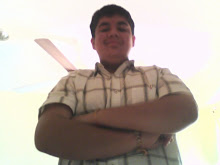
This chapter discusses about the different types of gears that we can use in a robot. A single gear wheelis not very useful- it isn't useful at all. We need atleast two gears. The most imprtant property of a gear is its teeth. Gears are classified by the number of teeth they have. An example is that a gear with 24 teeth wll become a 24t gear or a gear with 8 teeth will become an 8t gear. The fundamental property of a gear is that they transfer motion from one axle to another. Another important thing you should notice is thaat you are not required to apply much strangth to make them turn. Their teeth match well and there is only a small amount of friction. A fourth, and subtler, property you should have picked up is that the two axles revolve at different speeds. To get an increase in speed, you have to sacrifice a decrease in torque. Torque is a measure of the tendancyof a force to rotate an object.
The largest gear is the geartrain. It has 40 teeth (40t). Geartrains give you incredible power because you can trade as much velocity as you want with the same amount of torque.

Idler gears usually help you connect distant axles. An advantage is that they change the direction of the output.
Backlash is the amount of oscilation a gear can endure withou affecting its meshing gear. Backlash is amplified when gearing up, and reduced when gearing down. It generally has a bad effect on a system, reducing the amount of precision with which you cannot control the output axle, and for this reason, ti should be kept to a minimum.
Pulleys are like wheels with a groove (calleda race) along their diameter. Photo of a pulley below.

A worm gear is a strange gear that resembles a sort of cylinder with a spiral wound around it. A photo of a worm gear below.

A crown gear is a secia gear with front teeth that can be used like an ordinary 24t, but can also combinewith another straight gear to transformotion in an orthogonal direction, possibly achieving at same time a ratio different from 1:1.


4 comments:
lots of nice picutres and good info.
what is with the first pic? doesnt see to really fit because those gears werent used by us, were they?
Great how you used all of the pictures to help illustrate
I like your use of photos for comprehension. Good info
Post a Comment